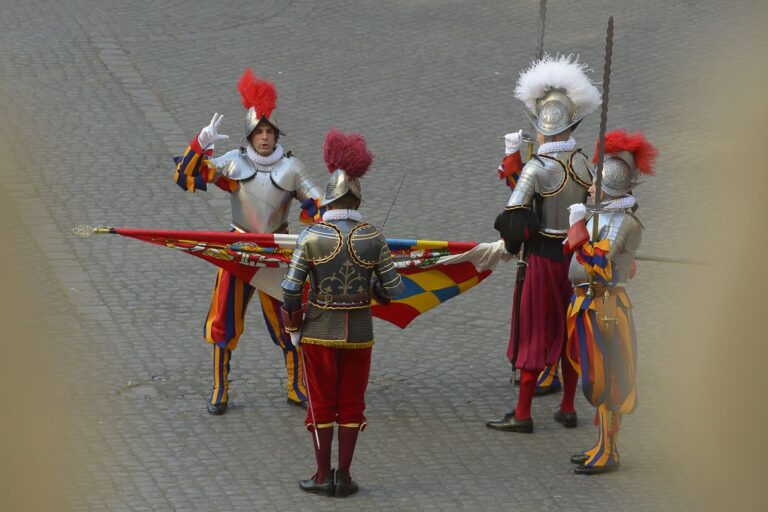The Swiss Guard is the oldest standing military unit in the world. Founded in 1506 by Pope Julius II, it still serves as the official guardian of the Pope and Vatican City. Many people see the striking uniforms and the statuesque presence during public appearances, but few know what truly goes on behind Vatican walls in the life of a Swiss Guard.
This article breaks open that world. It explains everything behind the discipline, training, ceremonial duty, and personal life of the Pope’s elite soldiers.
Daily Routine
| Time | Activity |
|---|---|
| 5:30 AM | Wake up, uniform preparation |
| 6:00 AM | Morning prayer and Mass |
| 7:00 AM | Physical training |
| 8:00 AM | Breakfast and station assignments |
| 9:00 AM | Guard duty or special operations |
| 12:00 PM | Lunch and personal rest |
| 1:00 PM | Tactical or protocol training |
| 3:00 PM | Second duty shift or administrative work |
| 6:00 PM | Dinner and community time |
| 8:00 PM | Evening prayer |
| 9:00 PM | Lights out |
Early Morning: Physical and Spiritual Preparation
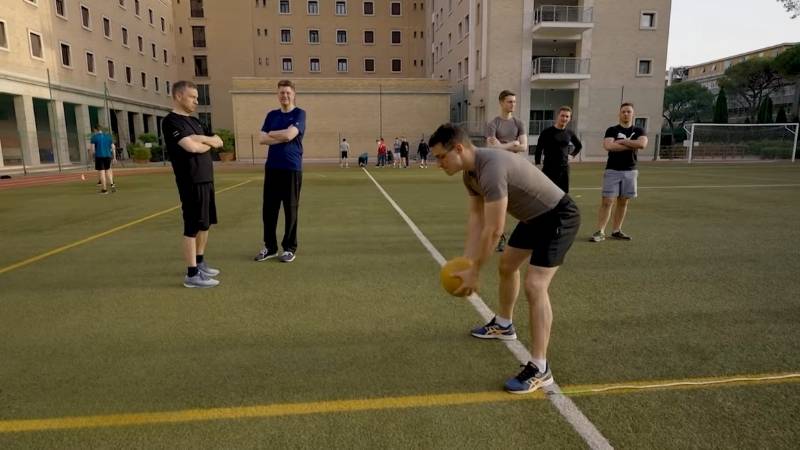
A typical day starts before sunrise. The guard wakes early. He prepares his uniform, checks his schedule, and heads for morning prayer.
Daily Mass and Spiritual Grounding
Guards attend a private Mass in the Vatican chapel. Faith plays a central role in their lives. Daily Mass helps center their mind. It serves as spiritual armor before the more physical demands of the day begin.
Physical Training
Fitness is essential. Every guard must stay alert and ready. After Mass, guards head to physical training. This involves:
- Martial arts
- Strength workouts
- Tactical drills
- Endurance runs
This routine prepares them for hours of standing, processions, and crowd control. A weak body cannot serve long in such a demanding post.
Uniform: More Than Decoration
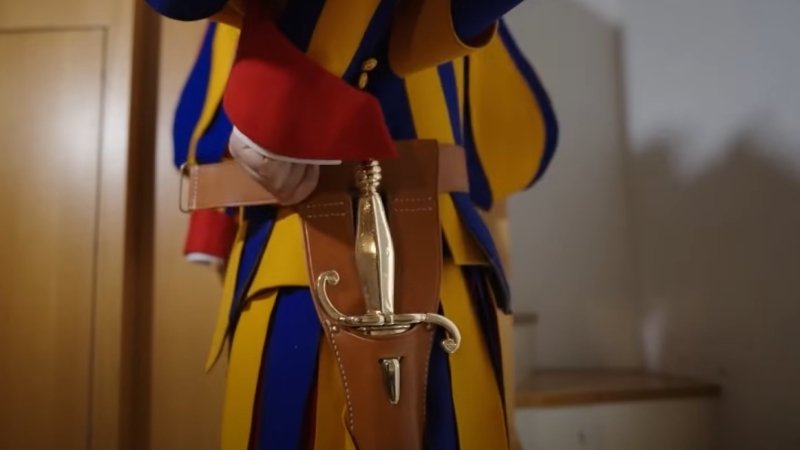
The uniform worn during ceremonies often draws attention. It reflects Renaissance design. Many believe Michelangelo designed it, but historical records credit Commandant Jules Repond, who updated the current style in the early 1900s.
The full dress uniform includes:
- Blue, red, orange, and yellow tunic
- Metal helmet with red ostrich feathers
- White collar
- White gloves
- Black shoes
They also wear a lighter-duty blue uniform for regular duties. Ceremonial swords and halberds are still in use, but modern firearms stay close at hand.
Daily Duties: Ceremonial and Strategic
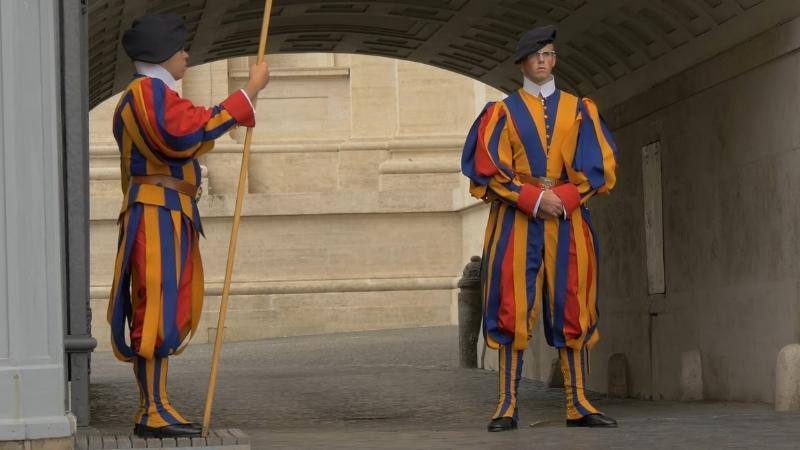
Not all time is spent in grand ceremonies. Swiss Guards handle a wide range of duties. Some are ceremonial, others are highly strategic.
Gate Duty and Public Access
Guards are stationed at key entrances into Vatican City. Their presence controls access to sacred and secure areas. Tourists may pass, but only through defined gates.
Each station lasts two hours. Guards must stand alert and still, even in heat or rain.
Papal Security
During public audiences or events, guards escort and protect the Pope. Their goal is to blend discipline with visibility. They act as both a deterrent and a reaction force.
Some guards wear civilian clothes during missions outside Vatican walls. Security protocols evolve constantly.
Processions and Ceremonies
During state visits, holidays, or canonizations, the guards take part in processions. Marching precision, posture, and timing are all rehearsed in advance.
Midday: Shifts and Training Continue
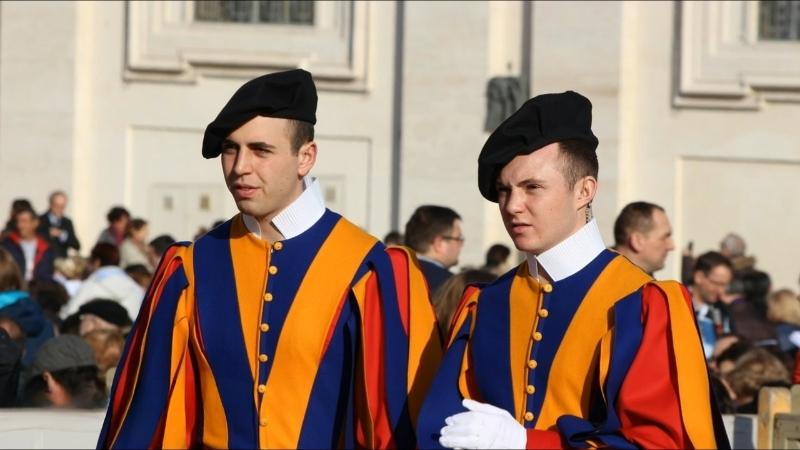
After a morning shift or training session, guards rotate. Others take over the post. Breaks are used for rest or meals.
Training never stops. Many guards use midday hours to train in new skills. Examples include:
- Emergency medical response
- Firearm proficiency
- Tactical planning
- Foreign languages (especially Italian, Latin, and German)
- Vatican protocols and diplomacy
The Swiss Guard must communicate with dignitaries, clergy, tourists, and law enforcement. Language training improves security coordination.
Guard Hierarchy and Career Growth
Ranks inside the Swiss Guard include:
| Rank | Role |
|---|---|
| Guard | Entry-level position |
| Corporal | Allows marriage, supervisory duties |
| Sergeant | Mid-level leadership |
| Sergeant Major | Senior operational planner |
| Lieutenant | Oversees training and deployments |
| Captain | Manages units, close security for the Pope |
| Commander | Appointed by the Pope; directs the entire corps |
Promotion allows more responsibility and personal freedom. Marriage is only allowed after reaching corporal rank.
Life Inside Vatican Walls
Swiss Guards live inside Vatican City. The community is close-knit. Shared housing, meals, and spiritual life build strong bonds among the guards.
Family Life
Once promoted, guards may request to marry. Housing is provided for families. Children raised in Vatican City attend local schools or ones nearby in Rome.
Life for a guard’s family is peaceful but highly secure. The Vatican is the smallest state on Earth. Every detail is monitored.
Personal Time
During off-duty hours, guards enjoy recreation. There are gyms, libraries, and lounges within the barracks. Guards may explore Rome in uniform or plain clothes, depending on the assignment.
Weekends and evenings often include:
- Attending cultural events
- Visiting home in Switzerland
- Studying theology or languages
- Visiting museums or basilicas in Rome
Guards must still be available during emergencies. Every guard stays on call at all times.
Entry Requirements
The selection process remains strict and traditional. Here are the requirements.
| Nationality | Swiss citizen |
| Religion | Practicing Roman Catholic |
| Military Background | Completed Swiss Army basic training |
| Age | 19 to 30 years old |
| Height | At least 174 cm (5 feet 8.5 inches) |
| Marital Status | Single upon entry; marriage allowed only after rank of corporal is reached |
| Education | Must hold a professional diploma or high school degree |
| Character | Must have good reputation and clean criminal record |
Origins of the Swiss Guard
The Swiss Guard began over 500 years ago. Pope Julius II called upon Swiss mercenaries, known for loyalty and courage, to protect the Vatican. They entered Rome on January 22, 1506. That date still marks the official founding of the Swiss Guard.
Even today, guards must be Swiss citizens. They must also be Catholic, unmarried at the time of enlistment, and have completed basic military training in Switzerland.
Unique Traditions
The Swiss Guard holds to centuries-old traditions.
Swearing-In Ceremony
Each new recruit takes an oath on May 6. That date honors the 147 guards who died protecting Pope Clement VII during the Sack of Rome in 1527.
Recruits swear loyalty before the Pope. They raise their right hand and recite the oath in their native language.
Saint Nicholas of Flüe
He is the patron saint of the Swiss Guard. Each year includes a special Mass and celebration in his honor.
Feast Days and Marches
The guards hold military parades on Catholic feast days. These include the Feast of Saints Peter and Paul, Christmas Eve, and Easter Sunday.
Advanced Training and International Missions
The Vatican trains guards to handle modern threats.
Security Tactics
Guards receive training in counter-terrorism and digital surveillance. Cooperation with Italian law enforcement ensures a secure perimeter during major events.
International Assignments
Some guards travel with the Pope. They prepare security details for papal visits abroad. Discretion and cultural knowledge matter more in such moments than weaponry.
Modern Equipment
Guards use modern radios, surveillance devices, and firearms. While the halberd symbolizes tradition, it coexists with tactical precision.
A Calling Beyond the Job
Serving in the Swiss Guard is not a regular job. It is considered a religious calling. Many guards leave after two to four years. Some pursue priesthood, public service, or law enforcement careers in Switzerland.
Others remain in Vatican service or continue as part of the ceremonial staff. All alumni join a private association of former Swiss Guards.
Common Misconceptions
Some people see the guards as ceremonial actors. That is false. Each guard is a trained soldier. They protect one of the most visible religious leaders in the world.
Others believe the guards only serve inside Vatican City. In truth, many serve during papal travels, attend global events, and coordinate with international security forces.
Closing Thoughts
The Swiss Guard lives in service, tradition, and readiness. Every day blends spiritual focus, military precision, and deep loyalty. Each action, whether silent or public, reflects discipline and heritage.
Yesterday’s values still shape today’s duties. Tomorrow may bring new threats, but the mission remains unchanged. The Swiss Guard protects not only the Pope, but also the tradition of Catholic service.
Keep in touch for daily updates and deeper dives into hidden Vatican life. A new daily horoscope and weekly forecast will be posted soon.

